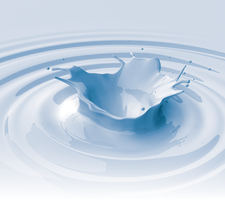Individual bootsplash for your own system
Splashing Out

© Sebastian Kaulitzki , Fotolia
Users interested in customizing even the smallest detail of their machines will probably want to modify the boot screen. We show you how to carry out this task with openSUSE 11, Ubuntu 8.x, and their derivatives.
Many recent distributions hide the Linux system's start messages behind a colorful image with a progress indicator. The bootsplash [1] has long become the trademark of each distribution – and is a well-known phenomenon in the world of Windows. A customized system needs a fair amount of manual attention.
Thus far, modifying the bootsplash meant manually modifying the kernel [2]. For one thing, you needed to enable support for the framebuffer device with support for at least 16-bit color. For another, it also meant installing a patch from the bootsplash homepage, although the makers of the original bootsplash system refer to more state-of-the-art approaches on their front page.
Several alternative approaches are available to Linux users now: Splashy [3], USplash [4], and Red Hat Graphical Boot. Splashy and USplash run in userspace, which means on a user account. This offers a number of advantages. For one thing, it does not affect system stability if the program code turns out to be buggy. For another, it makes configuration and customization easier.
[...]
Buy this article as PDF
(incl. VAT)
Buy Linux Magazine
Subscribe to our Linux Newsletters
Find Linux and Open Source Jobs
Subscribe to our ADMIN Newsletters
Support Our Work
Linux Magazine content is made possible with support from readers like you. Please consider contributing when you’ve found an article to be beneficial.

News
-
Parrot OS Switches to KDE Plasma Desktop
Yet another distro is making the move to the KDE Plasma desktop.
-
TUXEDO Announces Gemini 17
TUXEDO Computers has released the fourth generation of its Gemini laptop with plenty of updates.
-
Two New Distros Adopt Enlightenment
MX Moksha and AV Linux 25 join ranks with Bodhi Linux and embrace the Enlightenment desktop.
-
Solus Linux 4.8 Removes Python 2
Solus Linux 4.8 has been released with the latest Linux kernel, updated desktops, and a key removal.
-
Zorin OS 18 Hits over a Million Downloads
If you doubt Linux isn't gaining popularity, you only have to look at Zorin OS's download numbers.
-
TUXEDO Computers Scraps Snapdragon X1E-Based Laptop
Due to issues with a Snapdragon CPU, TUXEDO Computers has cancelled its plans to release a laptop based on this elite hardware.
-
Debian Unleashes Debian Libre Live
Debian Libre Live keeps your machine free of proprietary software.
-
Valve Announces Pending Release of Steam Machine
Shout it to the heavens: Steam Machine, powered by Linux, is set to arrive in 2026.
-
Happy Birthday, ADMIN Magazine!
ADMIN is celebrating its 15th anniversary with issue #90.
-
Another Linux Malware Discovered
Russian hackers use Hyper-V to hide malware within Linux virtual machines.

